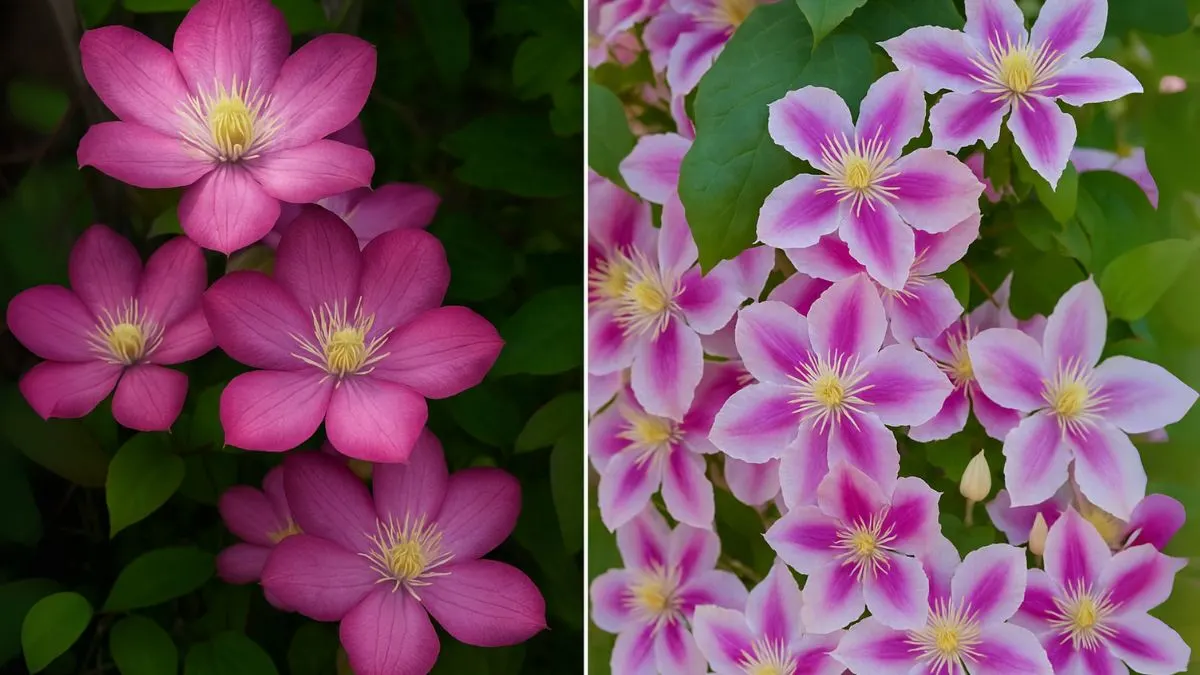If there’s one plant that perfectly balances strength with elegance, it’s the Leather Flower, a fascinating type of Clematis. Unlike traditional blooms, these plants boast climbing, woody vines and distinctive, leather-like petals that surprise gardeners with their unusual yet captivating beauty.
When I first saw a Northern leatherflower during a summer hike, I couldn’t believe how such delicate looking but quite leathery blooms could look so fragile yet feel so resilient. It was love at first sight. Today, let’s explore why this plant is cherished worldwide and how you can grow it successfully in your own garden.
What Makes Leather Flower Unique?

The Leather Flower/Clematis is part of the same family as the more familiar flowering clematis, yet it holds its own charm. Its petals aren’t soft like roses or lilies; instead, they’re slightly tough and textured, giving rise to the name “leather flower.” Gardeners adore them not just for their strength, but also for their unusual shapes—some resemble bells, others star-like blossoms. These plants thrive on trellises, fences, or even sprawling naturally in cottage-style gardens.
Popular Varieties of Leather Flower
- Clematis Pitcheri: The Clematis pitcheri is admired for being long lasting and dependable. Its purple, bell-shaped flowers add elegance to summer gardens, staying vibrant far longer than many other blooms. If you’re looking for a hardy climber that rewards you with beauty throughout the season, this variety is a perfect choice.
- Northern Leatherflower: The Northern leatherflower is a deciduous, twining, woody, perennial vine that thrives in well-drained soil and partial to full sunlight. Its showy lilac bells with highly curved petals emit a light sweet fragrance, making it a favorite for pollinator-friendly gardens. I once planted one along my backyard fence, and within a year, it became a hummingbird magnet.
- Clematis Texensis (Scarlet Leather Flower): If bold colors excite you, then the Clematis texensis, also known as the scarlet leather flower, is your go-to. Its fiery red blossoms stand out dramatically in any garden. Despite their striking looks, the blooms remain delicate looking but quite leathery, holding up well against wind and weather.
Also Read: Grow Cleome for Bold Blooms That Bees and Hummingbirds Can’t Resist
Growing and Caring for Leather Flowers
- Planting: Like most clematis varieties, leather flowers prefer sunny tops and shaded roots. Plant them where the base of the vine can stay cool, but the climbing stems reach sunlight. Adding mulch helps regulate soil temperature and moisture.
- Soil and Water: They thrive in fertile, well-drained soil. Regular watering is essential during the first growing year, but once established, they require minimal maintenance.
- Support and Pruning: Because these climbing, woody vines love to spread, give them a trellis, arbor, or wall to climb. Pruning depends on the type—some need yearly cuts to encourage blooms, while others only require occasional tidying.
- Seasonal Care: In colder regions of Canada or the northern USA, mulching during winter protects roots from frost. These vines are resilient, but extra care ensures they bloom beautifully year after year.
Why Choose Leather Flowers for Your Garden?
- Unique Beauty – Their delicate looking but quite leathery blooms stand apart from typical garden flowers.
- Fragrance – The showy lilac bells with highly curved petals emit a light sweet fragrance, adding sensory delight.
- Longevity – Varieties like Clematis pitcheri are long lasting, ensuring extended beauty.
- Diversity – From the scarlet leather flower to lilac and purple forms, there’s a shade for every taste.
- Wildlife Friendly – These flowers attract bees, butterflies, and hummingbirds.
Popular Leather Flower Varieties
Variety |
Flower Color & Shape |
Notable Feature |
Clematis pitcheri |
Purple bells |
Long lasting blooms |
Northern leatherflower |
Lilac bells with curves |
Sweet fragrance |
Clematis texensis (scarlet leather flower) |
Red, tulip-shaped |
Bold and striking |
Also Read: The Fascinating Science of Photosynthesis & Respiration
Personal Experience
When I planted my first Clematis texensis, I wasn’t expecting much. But by midsummer, the entire trellis was covered in red blooms, catching every neighbor’s attention. What amazed me most was how the petals felt tough, almost leather-like, despite looking delicate. That resilience convinced me these plants are worth every gardener’s time.
The Leather Flower/Clematis is not just another ornamental vine—it’s a story of strength hidden within beauty. With varieties like Clematis pitcheri, Northern leatherflower, and Clematis texensis, also known as the scarlet leather flower, you can bring timeless elegance to your garden.
Their climbing, woody vines, delicate looking but quite leathery blooms, and showy lilac bells with highly curved petals make them irresistible for gardeners in Canada, the USA, and around the world. If you want a plant that is unique, fragrant, and enduring, the leather flower deserves a special spot in your landscape.






